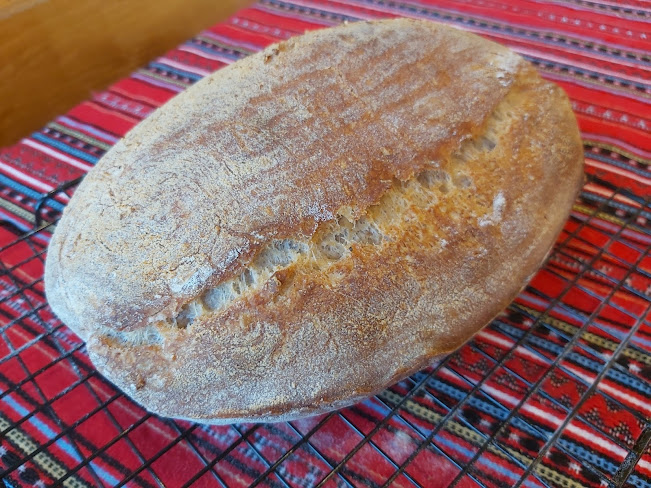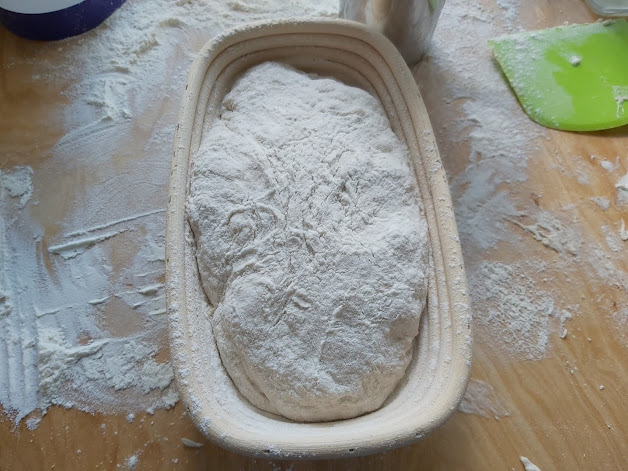Como Bread - Pane di Como
BreadClub20....the award-winning site for Happy Bakers.
2021 : World Bread Awards : Winner - Wales
Welcome to another step-by-step recipe from BreadClub20. Why not drop by our main Facebook page by clicking here.... If you like what you see and enjoy the recipe, we hope you go on to join us by 'Liking' and 'Subscribing'.
Como bread of Pane di Como is traditional white bread from the area surrounding Lake Como in Northern Italy.
Sometimes referred to as 'pan de Comm', it is the oldest bread produced in the region and dates back to the 900s AD. It's not particularly difficult nor unusual in the way that it is made, but it's prized and loved throughout the area.
It incorporates what is known as a chariot - we might know it better as a biga. A pre-ferment of flour and water (occasionally with the addition of a little commercial yeast) that is allowed to ferment, used and then the remainder is fed and kept chilled until it is needed again. It is then re-fed and the cycle repeated. The biga is then added to the new mix (which is referred to as the banquet) and the bread kneaded, proofed and baked. As the biga sponge matures, the taste develops a distinct sourness, reminiscent of sourdough, although it is not referred to as such.
Traditionally, it's made with Italian spring water and baked in a wood-fired oven. Today, I'm sorry to say...it's Welsh water and the electric oven. It'll have to do. Anyway, you'd have to go a long way to beat Welsh water.
Como bread should have a soft centre, a wonderful smell and a golden crispy crust. Let's get on with it.
INGREDIENTS
236 gms tepid flitered water
250 gms strong white bread flour
38 gms of wholemeal flour
½ teaspoon active instant yeast
65 gms of biga
1¼ teaspoons of sea salt
My biga is fed with 50:50 bread flour and tepid water. The original biga recipe is:
¼ teaspoon instant active yeast
157 gms of filtered water
219 gms bread flour
Mix for five minutes and then leave in a covered jar overnight. Take what you need for your bake and put the rest in a sealed container in the fridge. It will last unfed for 2 weeks. When you next use it, extract enough to re-feed and throw the rest. Then replace it with the extra re-fed biga.
METHOD
This recipe can be made using a stand mixer or in a machine on a bread dough setting and then finished by hand.
Alternatively:
Add the water to a large bowl and then add the biga to the water.
Mix the biga until it has been thoroughly incorporated into the water.
Add the salt and mix.
Add the flours and the yeast and mix until it is a sticky dough.
Tip out onto a lightly-floured board and knead until the dough is soft and silky.
Tip the dough into a lightly-oiled bowl, place somewhere warm and allow to rise for about an hour. It should double in volume.
Tip the dough out onto the worktop and gently knock back.
Pre-shape the dough into a boule and leave to rest (covered) for 15 minutes.
Reshape the dough into a boule and create tension on the surface of the dough by gently drawing it towards you down the worktop. Repeat this process two or three times.
Shape to fit your well-floured banneton.
Place some where warm for up to one hour.
Preheat a baking stone (or Dutch Oven) to 205⁰C.
Invert from the banneton onto parchment paper, mist and score and then bake in the oven for approximately 45 - 55 minutes until it is golden brown and hollow when tapped underneath.
Allow to cool for several hours to enable the crumb to set and the crust to develop its crispness.
Happy baking.....







Comments
Post a Comment